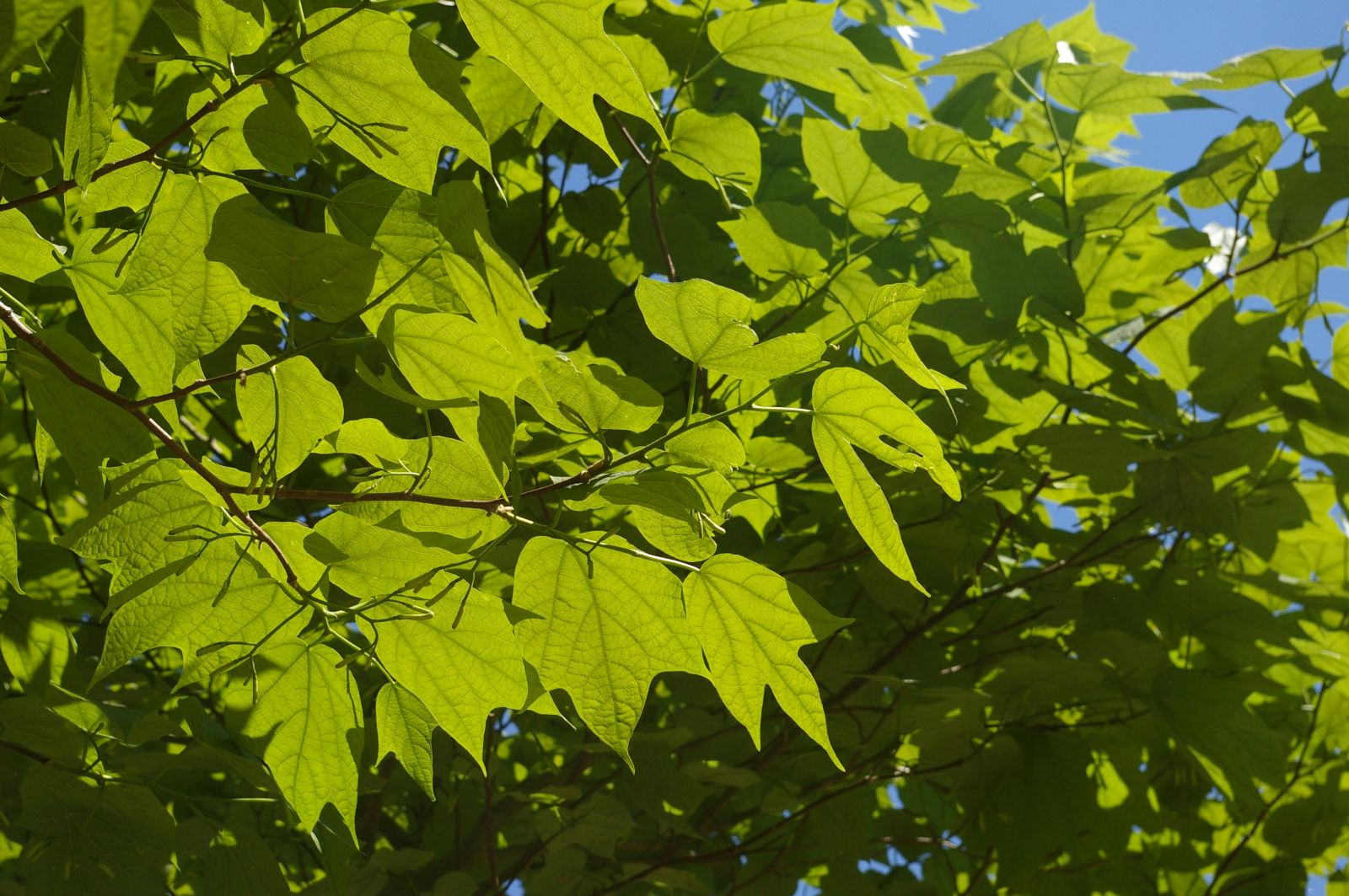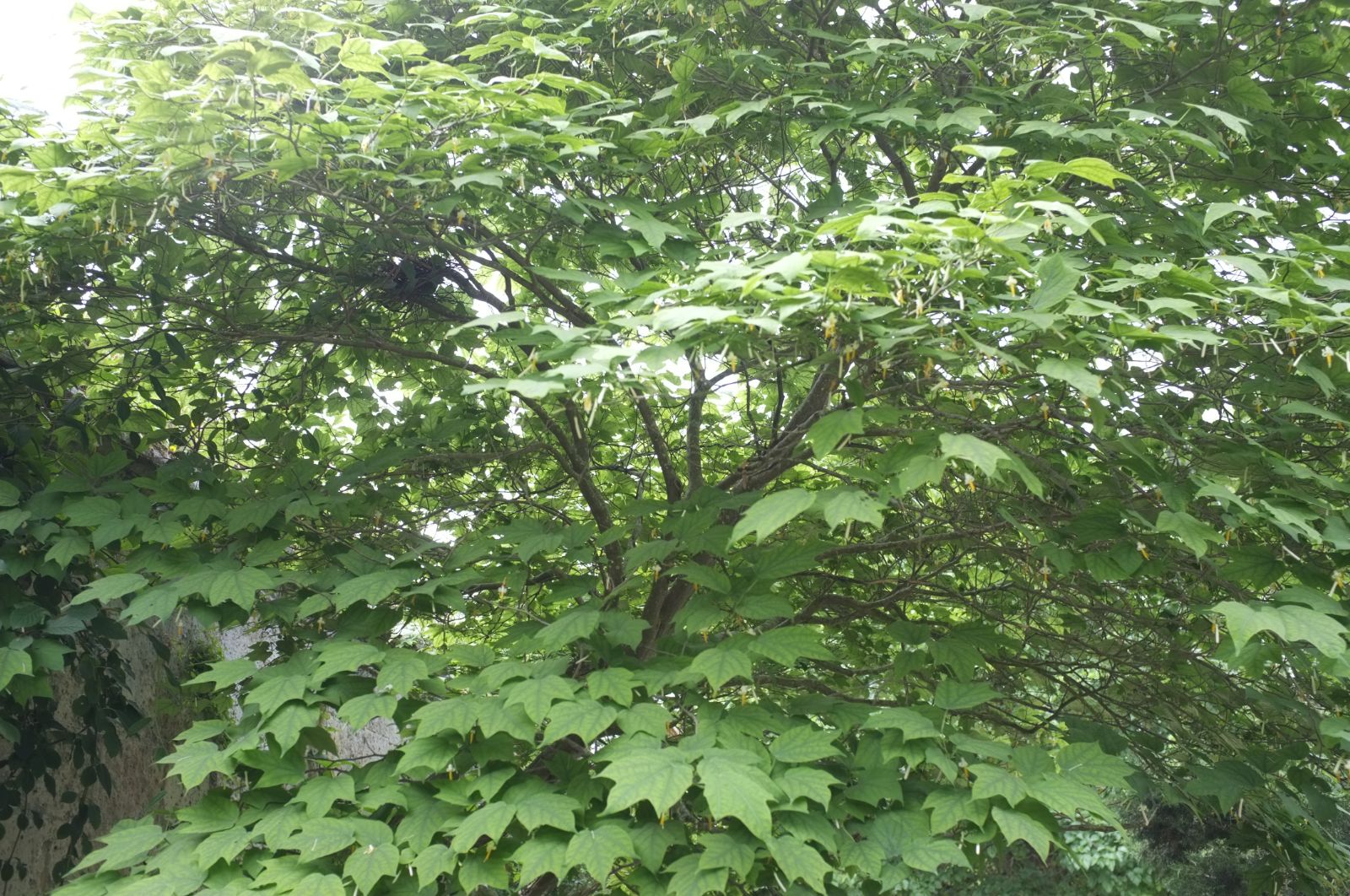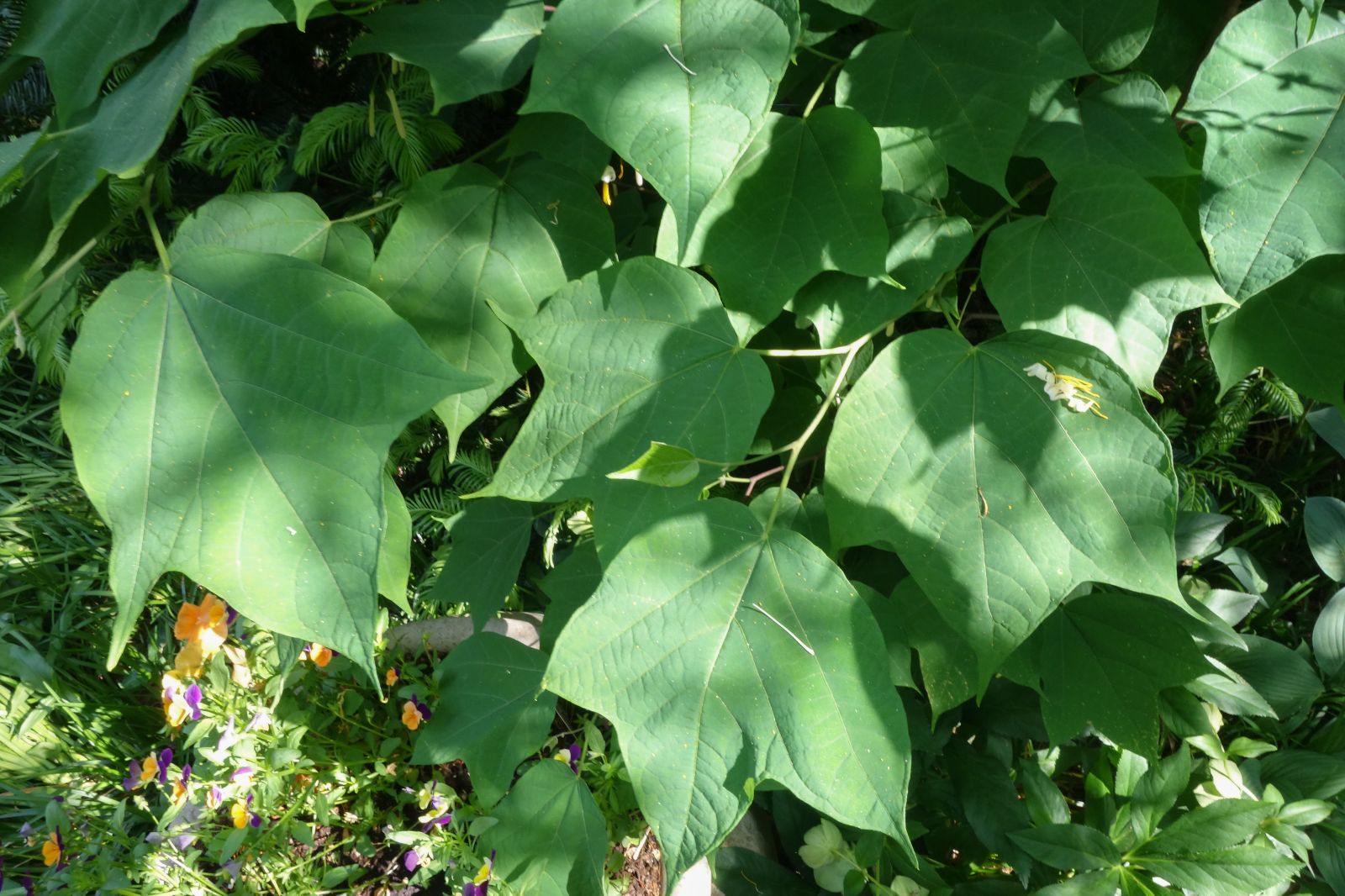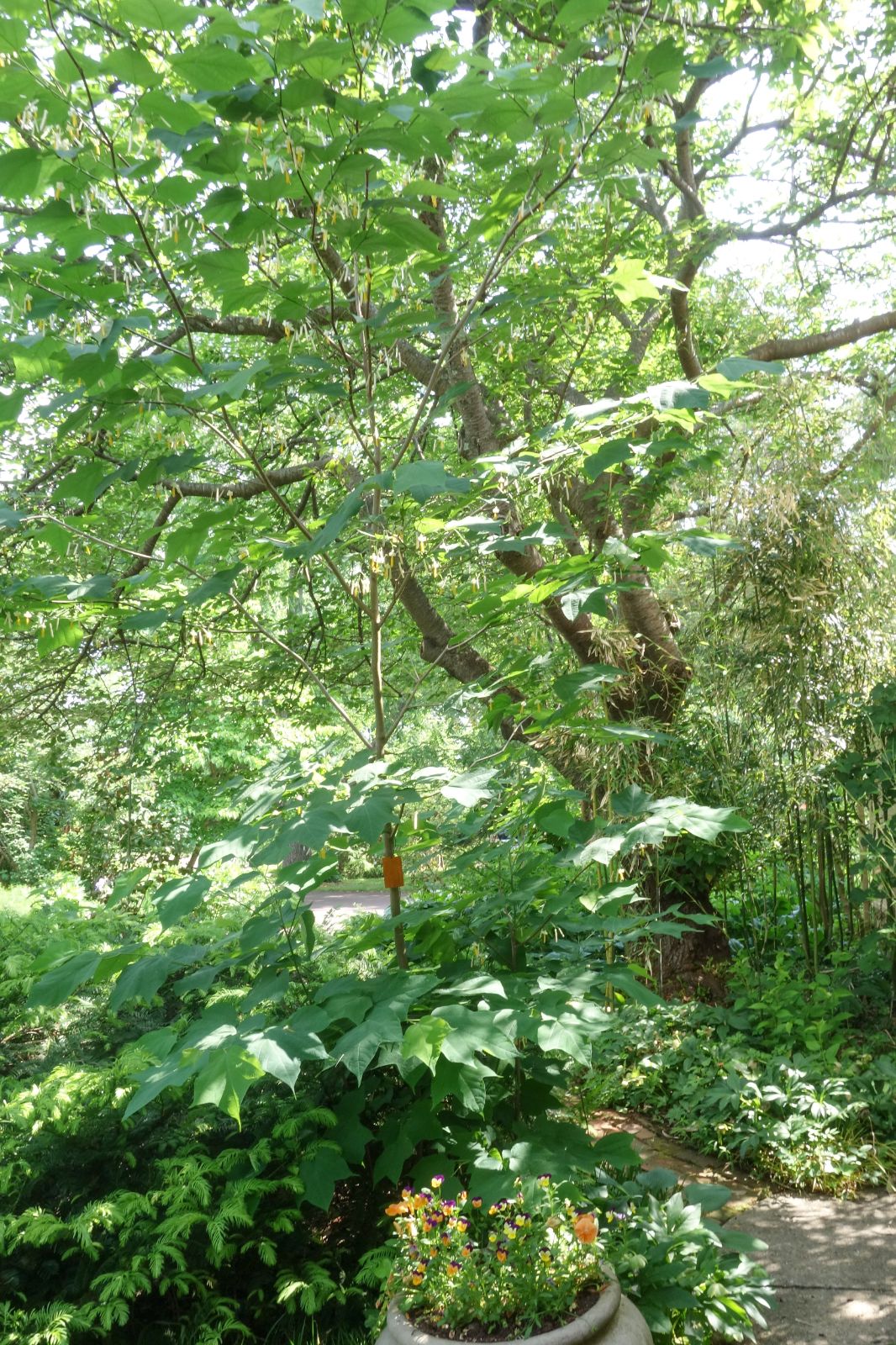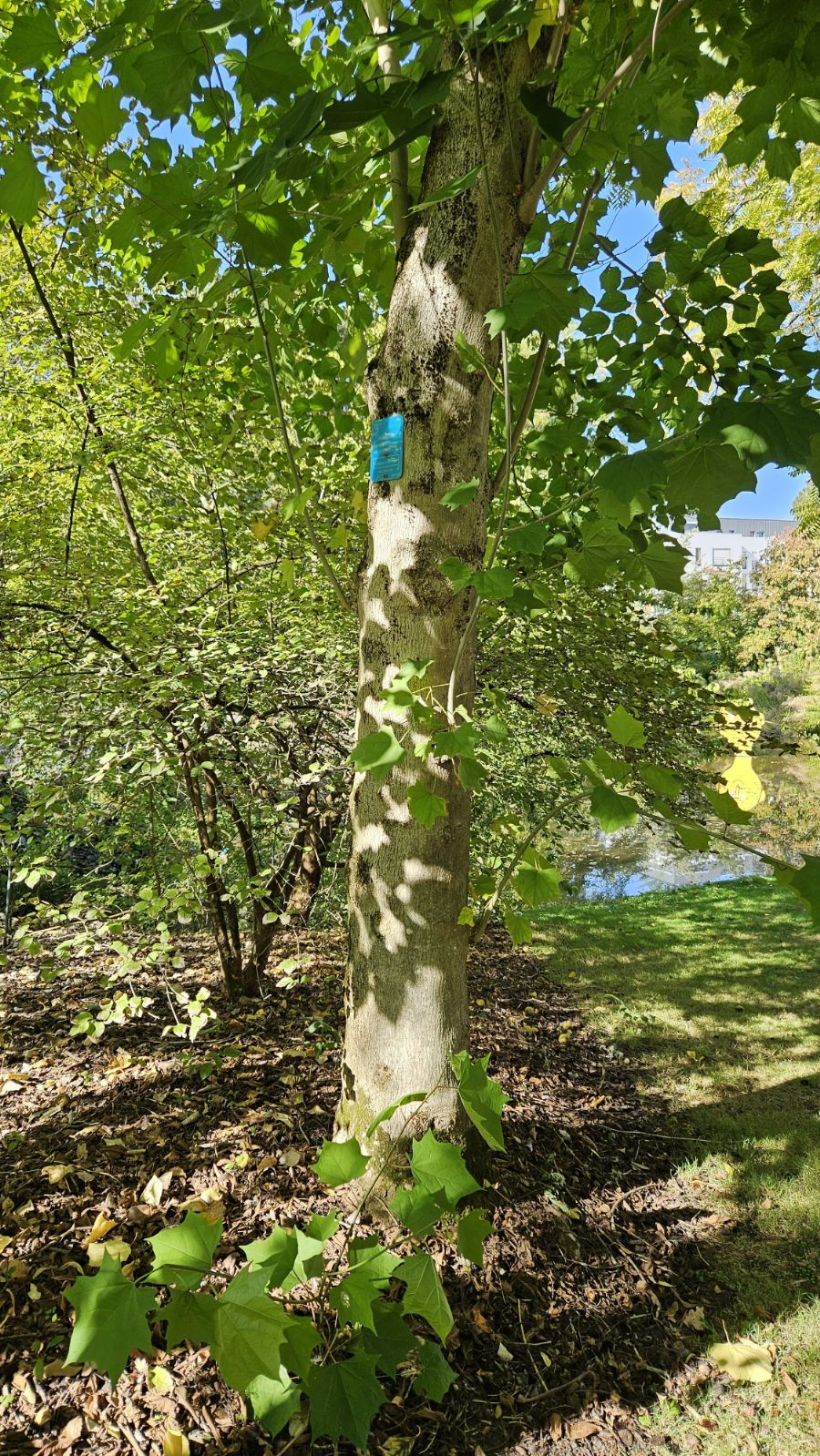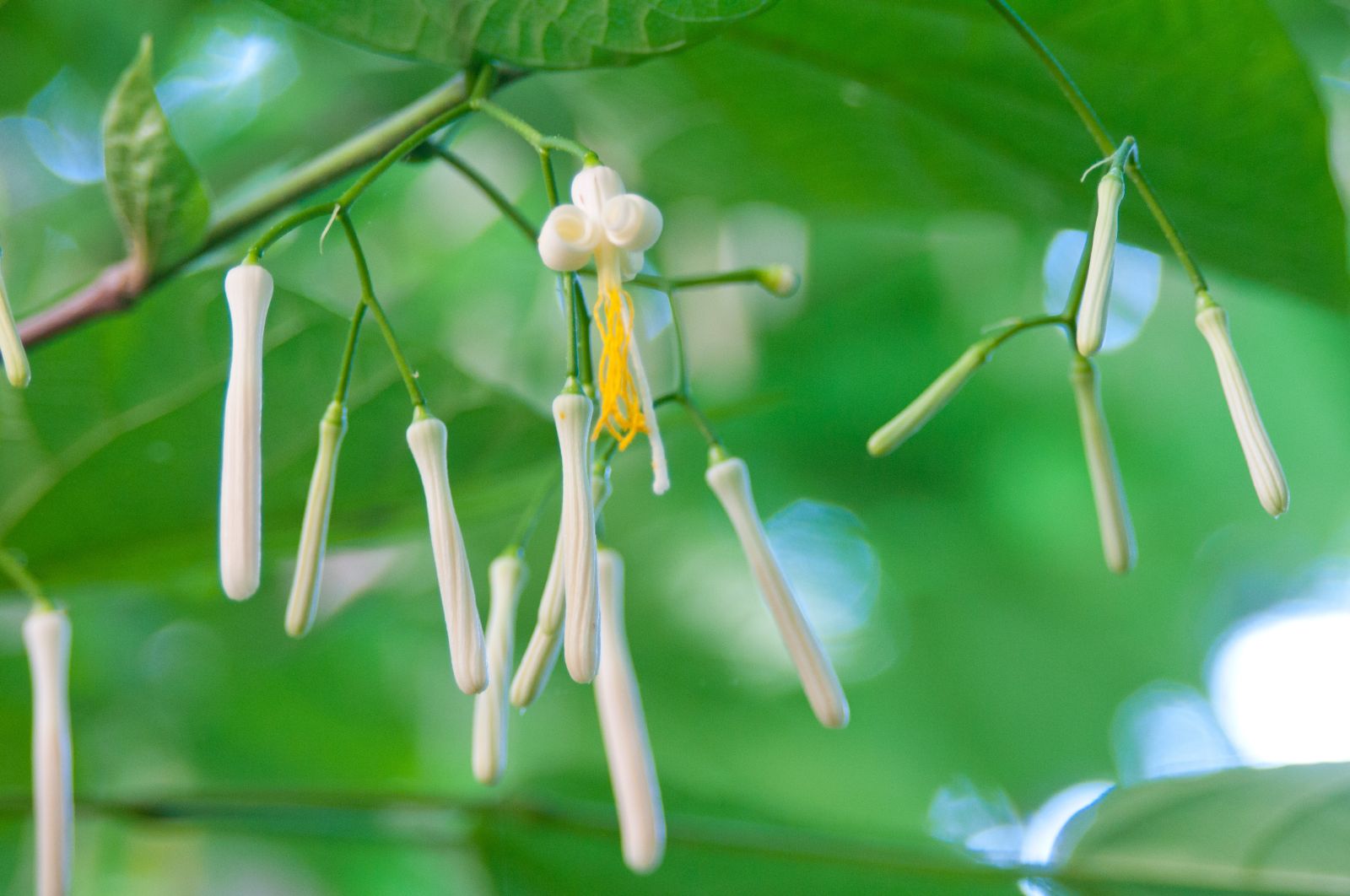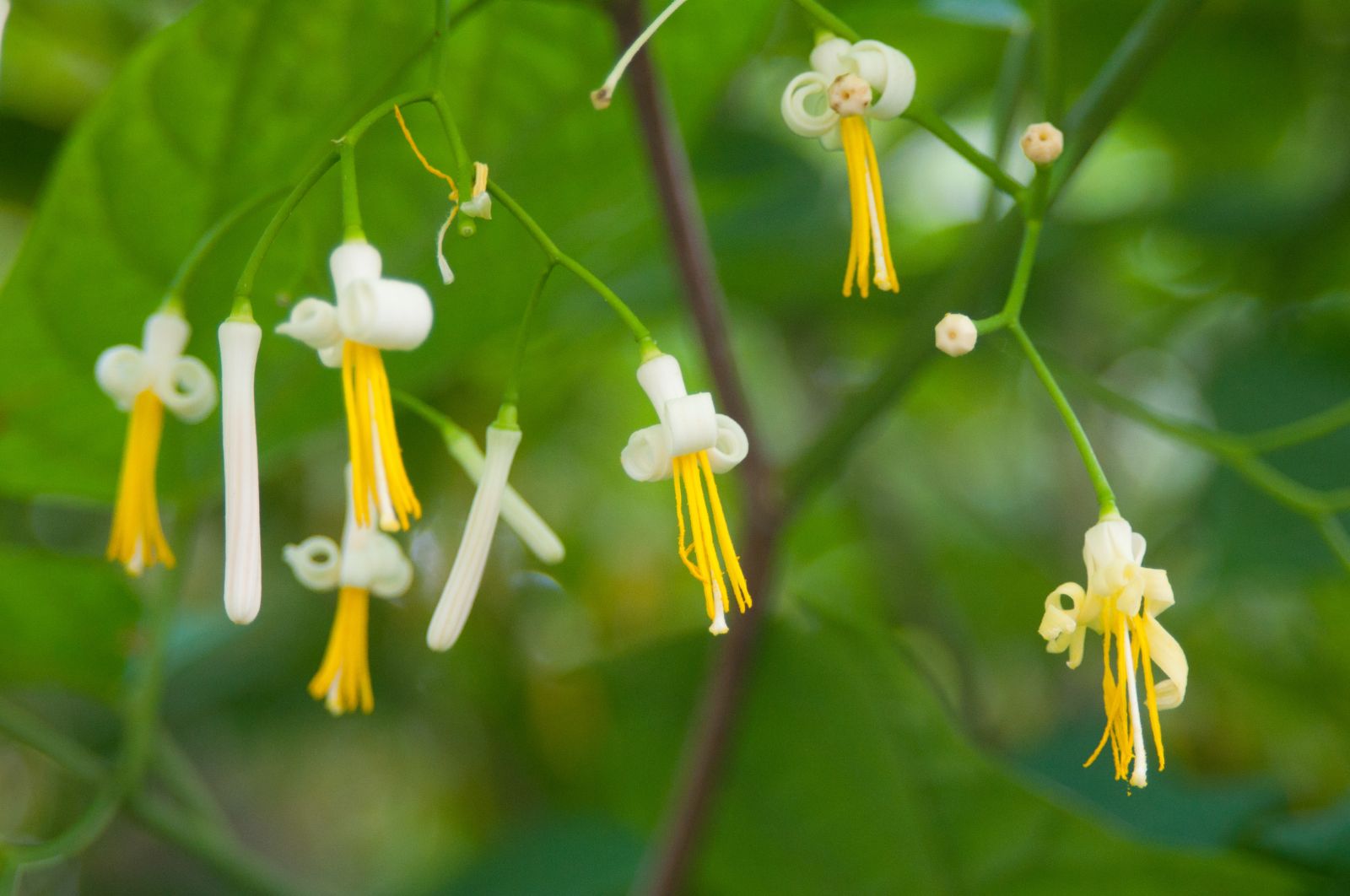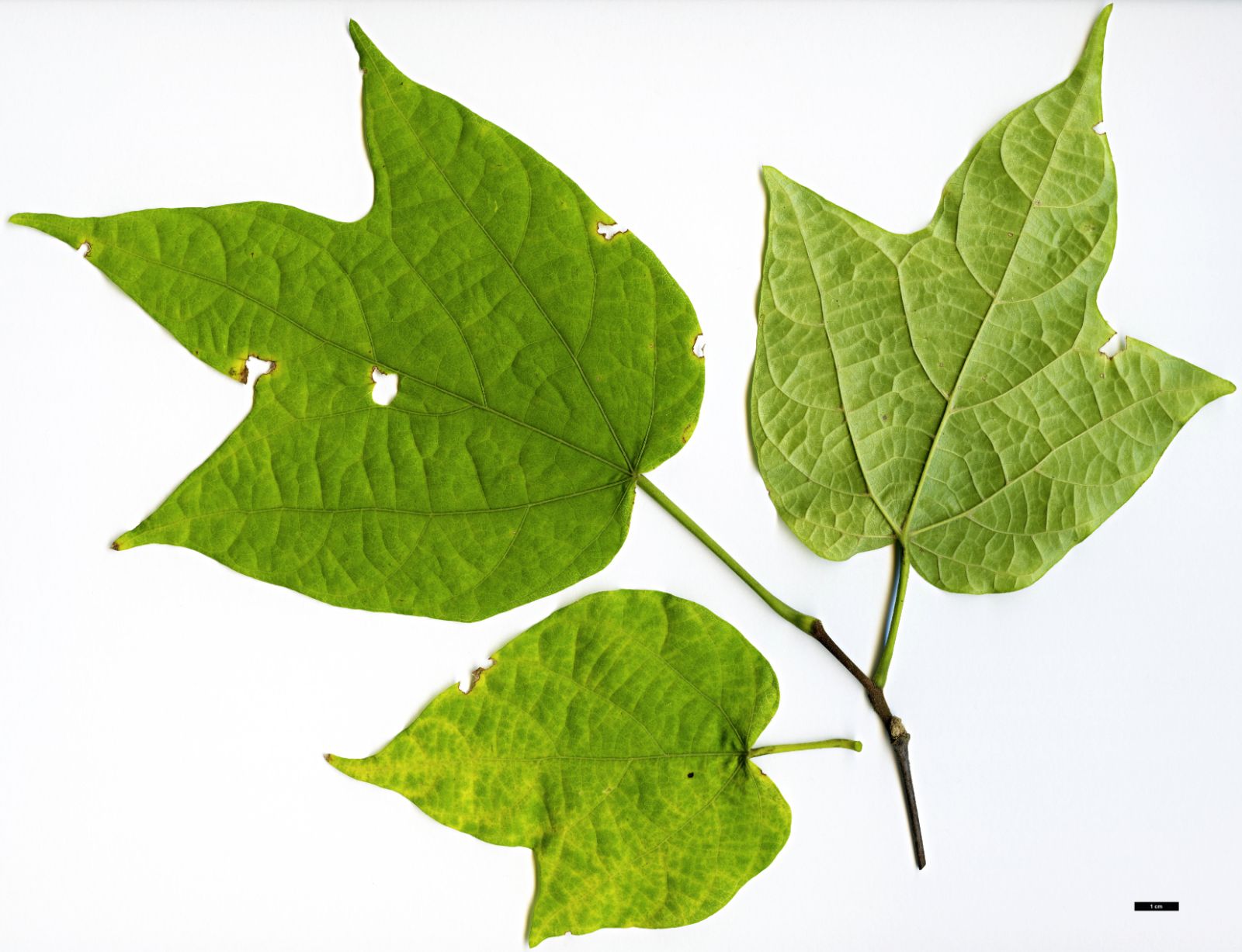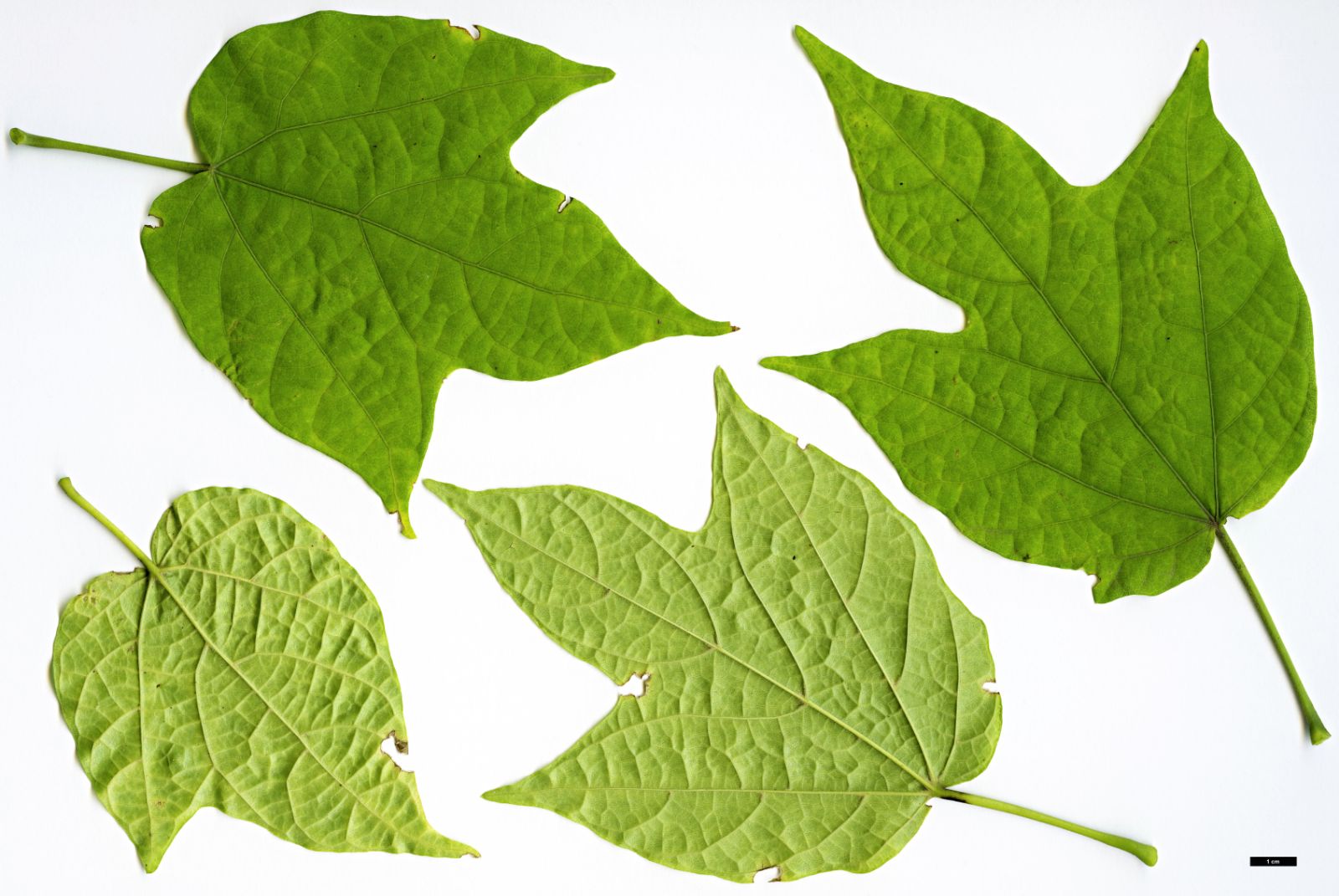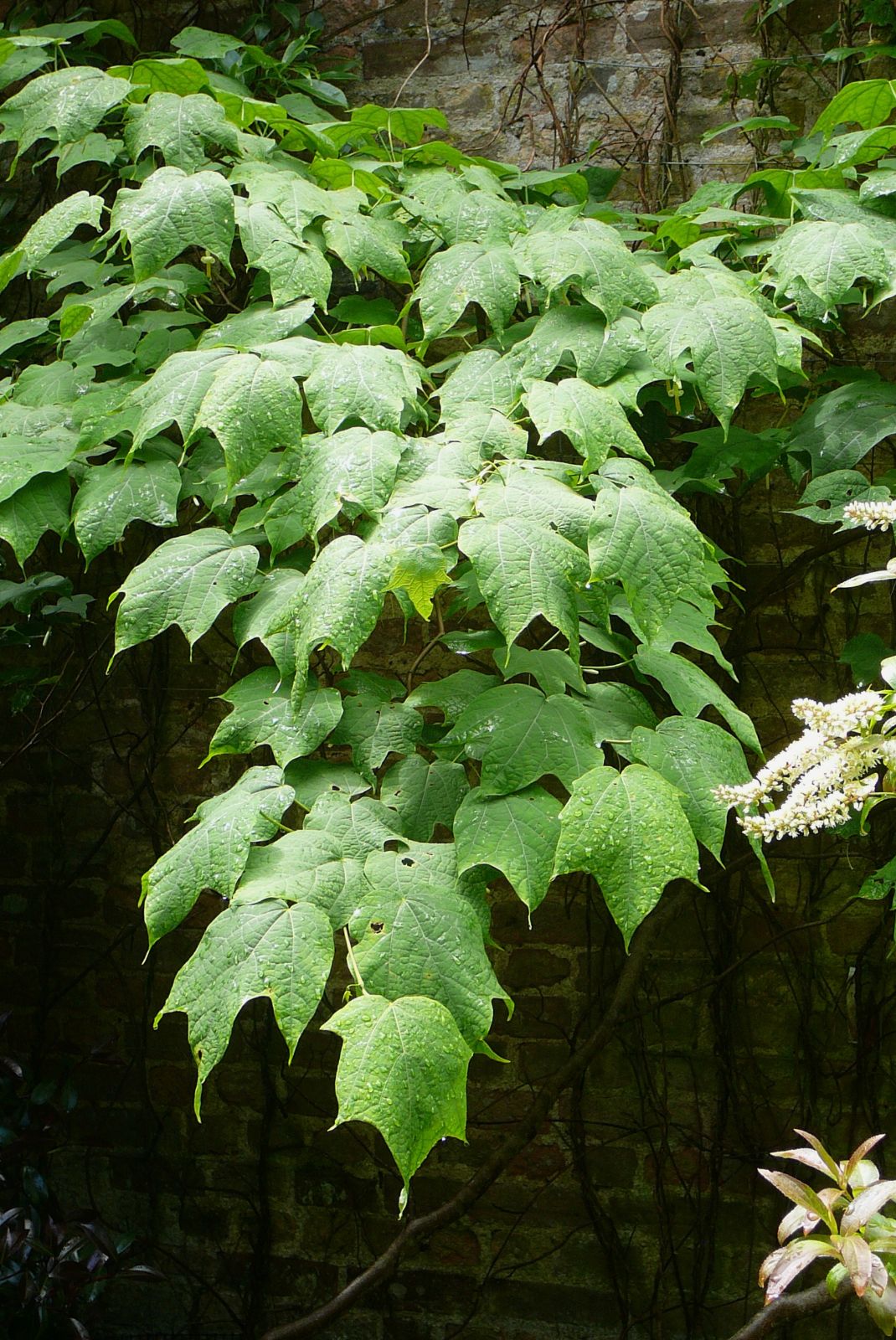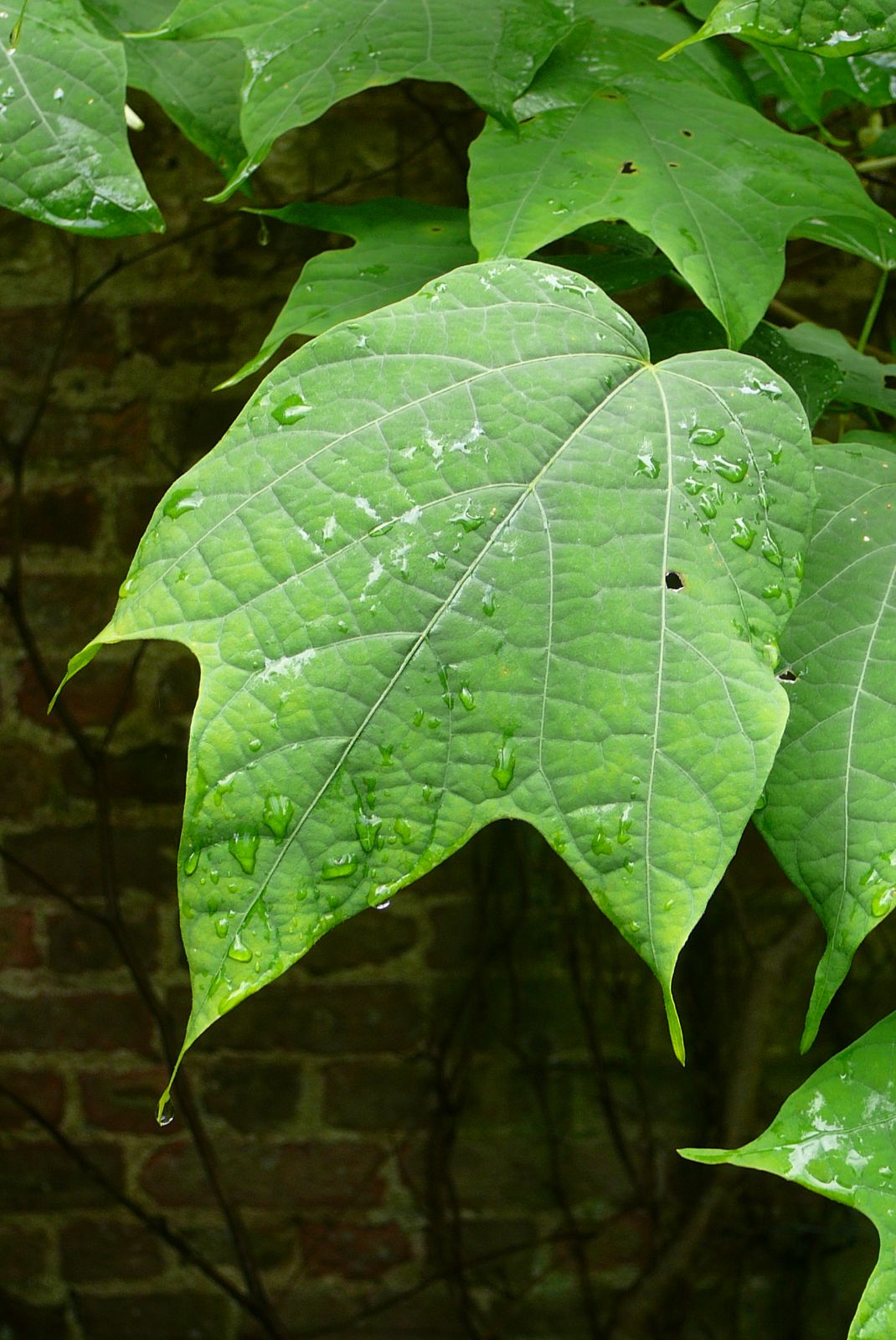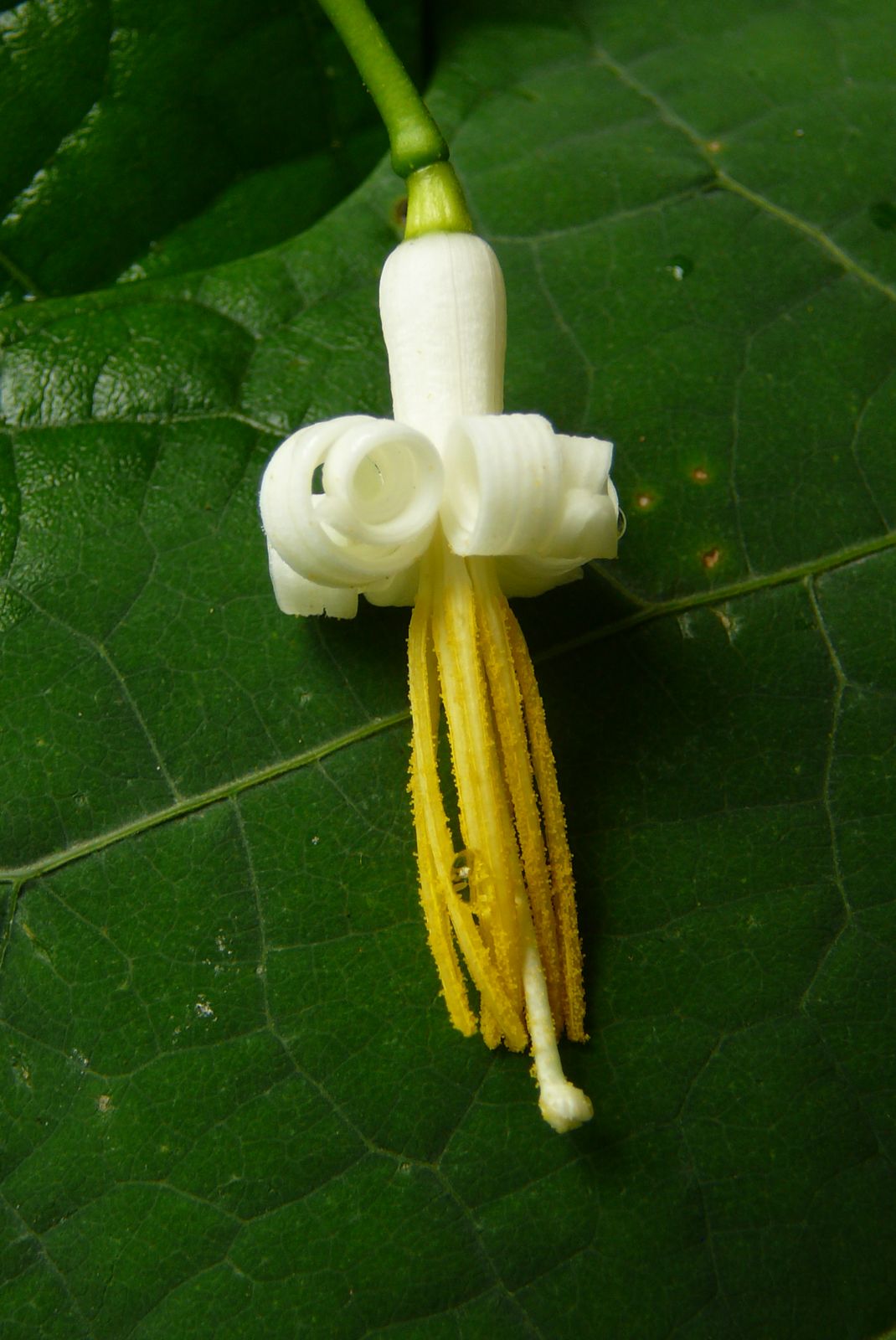Alangium platanifolium
Credits
Article from Bean's Trees and Shrubs Hardy in the British Isles
Recommended citation
'Alangium platanifolium' from the website Trees and Shrubs Online (treesandshrubsonline.
Genus
Synonyms
- Marlea platanifolia Sieb. & Zucc.
A deciduous shrub 6 ft or more high, with erect, zigzagged, but not much branched stems; branches very pithy and slightly downy; winter buds hairy. Leaves alternate, roundish or broadly ovate in main outline, 4 to 8 in. long, nearly as wide, with two to seven (usually three or five) large pointed lobes towards the apex; upper surface dark green, and smooth except for scattered hairs; lower surface covered with pale down; stalk 1 to 3 in. long. Flowers white, produced during June and July in a one- to four-flowered cyme from the leaf-axils of the current year’s shoots; the common stalk is 1⁄2 to 11⁄4 in. long and divides into two at the apex, the branches usually dividing again; flower-stalks 1⁄4 to 1 in. long; the flowers are 1 to 12⁄5 in. long and have an inferior ovary about 1⁄8 in. long and finely downy, which is surmounted by a narrow, finely toothed rim, which is the calyx; petals usually six, sometimes seven or eight, narrowly strap-shaped, cohering at first to form a narrowly tubular corolla but soon curving outward for over half their length, exposing the stamens and style; stamens as many as the petals, each attached to the base of a petal, filament 1⁄3 to 2⁄5 in. long and finely hairy, anthers very narrow, 2⁄3 in. long; the style is smooth, about 1 in. long, its base surrounded by a subglobose, fleshy disk about 1⁄12 in. long and bearing a shortly lobed, knob-shaped stigma. Fruit thinly fleshy (drupe-like), egg-shaped, about 1⁄2 in. long, containing a single, bony stone.
Native of Japan, whence it was introduced by Maries for Messrs Veitch about 1879. It is also a native of China, where it was found in Hupeh by Henry. This shrub must be regarded more as a curiosity than as an ornament in gardens, although the large maple-like leaves are handsome. It has not proved really hardy at Kew and is no longer grown there, the soft pithy shoots being too often cut by winter cold.
From the Supplement (Vol. V)
Graham Thomas has pointed out that this species has grown outdoors for many years at Hidcote in Gloucestershire.
† A. chinense (Lour.) Harms Stylidium chinense Lour.; Alangium begoniaefolium (Roxb.) Baill.; Marlea begoniaefolium Roxb. – An evergreen tree of no great height, or a shrub, with obliquely ovate leaves up to 8 in. long, with a few shallow lobes. Flowers smaller than in A. platanifolium, more numerous in each cyme. A widespread species occurring in tropical Africa, and in Asia from the eastern Himalaya to China and Malaysia. It is likely to be on the borderline of hardiness even when collected near the limit of its altitudinal range; introduced early in the 19th century and recently reintroduced from China.

